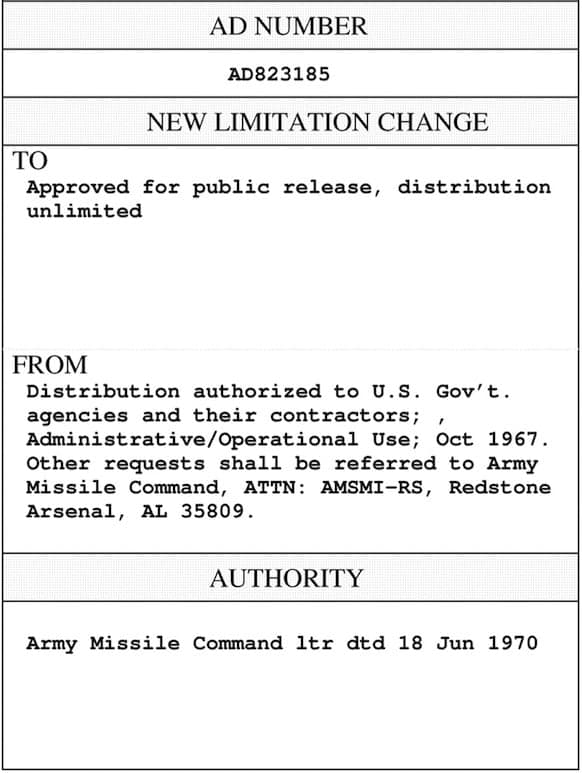
-----
Distinguish Between Electrodeposited Zinc and Cadmium Coating
Q. Would anyone be able to advise, on how we identify the coating deposits of the stud bolts by a simple spot test to distinguish cadmium from zinc plating. I have read from a previously posted method, where we may use dropping bottles, a watch glass, perhaps a white and black spot plate, 50% acids, sodium sulfide, safety glasses, and a careful person who is interested. Unfortunately, I am not familiar on the actual testing method itself, could someone advise the whole testing method ?
Note : XRF is not available to use.
Your response is highly appreciated.
studbolts manufacturer - Jakarta, Indonesia
2006
A. Dear Mr Gho,
Strip the coating in 50%v/v (warm) nitric acid.
Add concentrated ammonia
⇦ on
eBay or
Amazon [affil link] to the solution until red litmus paper turns blue(careful, splashing may occur!)
Then add a few drops 10% sodium sulfide solution.
A white precipitate indicates zinc, a yellow precipitate indicates cadmium.
Best regards,

Sjamp van Esch
- Eindhoven, The Netherlands
2006
2006
Q. Dear Mr. Sjamp van Esch,
Thank you very much for your answers. However since I have very little knowledge to any chemical testing method, I hope you could a little bit more elaborate on your previous explanation.
Your previously wrote :
1) Strip the coating in 50%v/v (warm) nitric acid. >>>
a) Strip will refer to peeling the cadmium or zinc from the coated stud bolts ? For i.e by scratch using a pen ?
b) 50%v/v nitric acid meaning dissolving the nitric acid with 50% de-ionised water or normal tap water ?
c) Warm , please advise the approximate temperature.
2) Add concentrated ammonia to the solution until red litmus paper turns blue(careful, splashing may occur!)
a) concentrated ammonia meaning pure ammonia solution i.e 99% v/v?
3) Then add a few drops 10% sodium sulfide solution.
4) white precipitate indicates zinc, a yellow precipitate indicates cadmium
a) How accurate and reliable is this test method ?
b) Is there a international standard that refer to this test method as per above ?
Once again, I thank you for your kind attention and hope to hear your response again.
Studbolts Manufacturer - Jakarta, Indonesia
2006
A. Dear Mr Gho,
Sorry for my late response.
I'll try to give you the answers on your questions:
1a) You don't have to peel off the zinc or cadmium by scratching with a pen or something like that.
Just put the bolts in the nitric acid and wait till the zinc or cadmium has dissolved.
1b) You can dilute the nitric acid either with de-ionised or normal tap water.
1c) I should say about 40 °C. When the temperature is less it's no problem but it will take more time to strip (dissolve) the coating. A higher temperature can cause a too vigorous reaction.
2) By concentrated ammonia I mean 30 w/w %(commercial grade, density about 0.89 kg/l)
A little bit less concentrated is no problem but then do you have to add more.
4a) The accuracy of the test is, in my experience, very good.
4b) I don't know if there is a international standard that refers to this test.
Kind regards,

Sjamp van Esch
- Eindhoven, The Netherlands
How to know if gold alloy contains cadmium?
Q. I'm a jeweler and trying to find out how to ID cadmium.
I ran across this question answered by Sjamp van Esch.
I wanted to ask how one IDs cadmium alloy in gold.
I work on a lot of people's jewelry and I know immediately, when soldering, if the alloy in the gold contains cadmium as it collapses on itself in a certain way, and there's a weird whitish color change in 14k yellow gold with cadmium.
I was hoping to discover an easy test I could do before heating.
wholesale jewelry repairman - Powell, Tennessee, USA
December 30, 2009
Q. If we have two sets of bolts, one with cadmium coating and the other with electroplated zinc, how do we differentiate the two differences? What kind of test can we conduct to confirm the coating.
Appreciate your kind feedback.
- jakarta, indonesia
October 4, 2018
A. Hi Hary. As you see, we moved your question to a thread where it was already answered. But if anything about Sjamp's excellent postings was unclear please request specific clarification. Good luck.
Regards,

Ted Mooney, P.E. RET
Striving to live Aloha
finishing.com - Pine Beach, New Jersey
Ted is available for instant help
or longer-term assistance.
October 2018
A. I would like to suggest a non invasive way of testing the difference between Zinc and Cadmium. Using a simple galvanic cell to test these metals natural standard reduction potential by calculating their electromotive force in an electrolyte of Magnesium sulphate(Epson Salt is much safer than sulfuric acid and less expensive than CuSO4, ZnSO4 and CdSO4)
Copper standard electrodes are available to test dissimilar metal coupling (testing for galvanic corrosion), but for testing bolts we can build simple single container galvanic cell.
The known Standard reduction potential of these metals are: Cadmium (-0.403V) and for Zinc is (-0.763V), the standard reduction potential of copper is (+0.34). in this case a strip of electrical wire (99.9% copper) will be the cathode in our simple galvanic cell. Place the two bolts separately from each other and from the copper wire, using a voltmeter(set up to 2 volt direct current settings) contact the red lead(+) to the copper wire. And the black lead(-) on one of the bolts, the Zinc coated volt will read close to 1.1 volts and the Cadmium coated volt will be 0.743 volts. You can also omit the Copper wire and do a simple bolt to bolt testing, in this simple galvanic cell, Zinc will be Anodic(-) to Cadmium and the voltmeter will read about 0.34 volts.
The Solution can be prepared by mixing about 10 grams of Epson salts with about 100 ml of tap water, the container can be a shallow one, the bolts can be partially submerged, after the test rinse the bolts with tap water and dry them so they can be used for their intended purpose.
- Managua, Nicaragua
February 23, 2019
![]() That's a pretty slick intelligent idea. Do you have experimental results that confirm it? Sometimes theory and practice diverge.
That's a pretty slick intelligent idea. Do you have experimental results that confirm it? Sometimes theory and practice diverge.

Tom Rochester
CTO - Jackson, Michigan, USA
Plating Systems & Technologies, Inc.

March 2, 2019
A. I have used this method many times before, but not to test Cadmium (it's nearly impossible to get my hands on, and zinc is a very good substitute, at least for what I do).
I use it to test Nickel/Cobalt, Nickel/iron alloys, Copper/Zinc alloys; while these and many alloys have very interesting physical properties, but their electromotive force or reduction potential will be the sum of their parts according to the alloy composition.
For more info on test procedures and background of the process please check PRACTICAL GALVANIC SERIES .
- Managua Nicaragua
March 3, 2019
Q, A, or Comment on THIS thread -or- Start a NEW Thread

